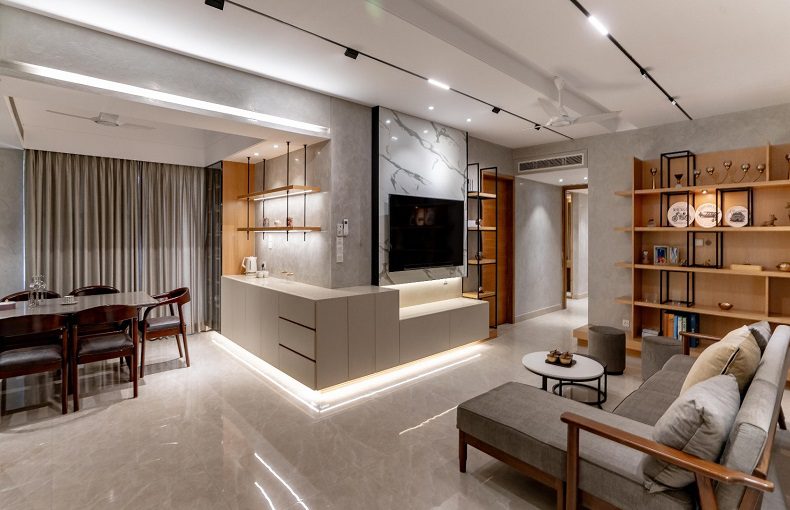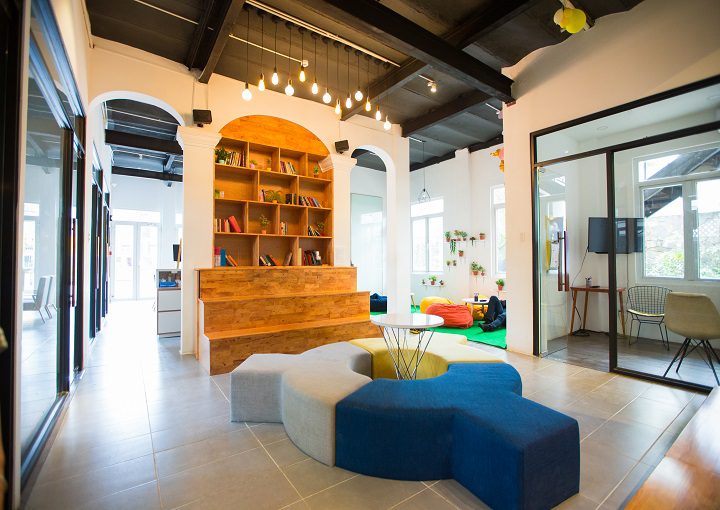Sustainable Office Interior Design: Creating Eco-Friendly Workspaces for the Future
Sustainable office interior design is no longer a niche concept. With the growing emphasis on sustainability and eco-conscious living, businesses are rethinking how their workspaces can reduce environmental impact while fostering a healthier environment for employees. This article will guide you through the principles, benefits, and practical applications of creating sustainable office interiors, showcasing how eco-friendly design solutions can transform workspaces into productive and green environments.
What is Sustainable Office Interior Design?
Sustainable office interior design focuses on creating workspaces that minimize negative environmental impacts through energy efficiency, material choices, and waste reduction. This approach incorporates eco-friendly elements like recycled materials, energy-saving lighting systems, and biophilic design to enhance both the environment and employees’ well-being.
In essence, sustainable office design is about creating a harmonious relationship between functionality and sustainability, ensuring that the office space serves both people and the planet.
Key Principles of Sustainable Office Interior Design
To design an eco-friendly workspace, consider the following principles:
- Energy Efficiency: Installing energy-efficient lighting and HVAC systems can significantly reduce power consumption. Motion-sensor lighting, LED bulbs, and optimized natural lighting layouts help conserve energy while maintaining comfort.
- Sustainable Materials: Choose materials that have a low environmental impact, such as FSC-certified wood, recycled metal, and non-toxic paints. Sustainable materials not only reduce resource depletion but also improve indoor air quality.
- Waste Reduction: Adopt the “reduce, reuse, recycle” mindset when designing offices. This can include repurposing old furniture, minimizing construction waste, and using materials that are easy to recycle at the end of their life cycle.
- Biophilic Design: Incorporating nature into the office environment through plants, green walls, and natural materials improves air quality and creates a calming, productive atmosphere. Natural elements also contribute to employee well-being.

Benefits of Sustainable Office Design
Sustainable design not only benefits the planet but also offers significant advantages to businesses and their employees. Here are some key benefits:
Environmental Impact
Eco-friendly office design reduces the carbon footprint by minimizing energy use and reducing waste. Using renewable energy sources, recycled materials, and efficient resource management, businesses can significantly lower their environmental impact.
Employee Well-Being and Productivity
Sustainable office designs create healthier environments that enhance employee well-being. Improved air quality, natural lighting, and ergonomic, eco-friendly furniture reduce stress and fatigue. Studies have shown that incorporating nature and natural elements into the workspace can increase productivity and creativity.
Cost Savings
While the upfront cost of sustainable materials and energy-efficient systems might seem higher, they offer long-term cost savings through lower energy bills, reduced maintenance, and increased durability of eco-friendly materials.
| Category
|
Sustainable Office Design
(Eco-Friendly) |
Traditional Office Design (Conventional) | ||
| Energy Savings | 40-60% savings with LED lighting, natural light, and energy-efficient HVAC systems. | Higher energy consumption due to inefficient lighting and older systems. | ||
|
30-50% less waste through recycled materials, modular furniture, and reduced renovation waste. | Higher waste generation from disposable materials and frequent renovations. | ||
| Employee Productivity | Increased by 15-20% due to biophilic design and better indoor air quality. | Lower productivity due to poor air quality and uncomfortable environments. | ||
| Initial Cost | Higher initial cost, but long-term savings in energy and maintenance. | Lower upfront cost, but higher operating and maintenance expenses. | ||
|
Reduced carbon footprint through energy-efficient systems and green materials. | Higher emissions due to inefficient energy use and lack of renewable materials.
|
Best Practices for Implementing Sustainable Office Interiors
Repurpose and Reuse Furniture
Instead of buying new office furniture, look for ways to repurpose or refurbish existing items. Consider second-hand or vintage furniture made from sustainable materials or opt for modular systems that allow for flexibility and long-term use.
Use Eco-Friendly Fabrics and Finishes
Select textiles and finishes made from natural fibers, such as organic cotton, linen, or wool. Avoid synthetic materials that release harmful chemicals. Low-VOC (volatile organic compounds) paints and finishes are another eco-friendly choice to improve indoor air quality.
Design Modular and Adaptable Workspaces
Sustainable office design isn’t just about materials but also how spaces are used. Modular workstations, movable walls, and multipurpose furniture allow businesses to adapt their spaces without undergoing major renovations, reducing waste over time.
Case Study: Landora Real Estate Ltd.’s Sustainable Office Interior
Design Concept: “Under Construction”
Landora Real Estate Ltd., a fresh face in the real estate industry, collaborated with Zero Inch ( zero inch = zero waste + zero carbon) Interiors Ltd. to create a sustainable office space that truly aligns with their mission of promoting eco-friendly construction practices. The project, named “Under Construction,” was designed to reflect an ongoing construction site, with a focus on fostering a productive, healthy work environment while emphasizing sustainability. The goal was to create a workspace that feels comfortable, relaxed, and informal, while also raising awareness about the importance of reducing carbon emissions in the construction industry.
Sustainability at the Core
Given that the construction industry is responsible for about 38% of global carbon dioxide emissions, Landora Real Estate Ltd. recognized the need to take a stand. Zero Inch Interiors incorporated reclaimed materials like construction work shutters into the design. These were repurposed as partition walls, while raw materials such as RCC walls, props, and metal were used as décor elements. By highlighting construction items as part of the office’s design, the space itself communicates a message of responsibility and sustainable practices.
Additionally, the choice to leave certain metal elements unpainted adds character to the office, allowing the construction materials to shine naturally while reducing the environmental impact of finishes. The entire project emphasizes the principles of sustainable office interior design, encouraging employees to adopt a similar approach in their daily construction-related tasks.
Office Layout and Amenities
The office layout supports both functionality and a relaxed atmosphere. Key features include:
- A friendly reception area with a cozy waiting and discussion space.
- 16 workstations for the site engineers and marketing teams, plus 2 desks for managers.
- Three glass executive cabins for heads of departments (marketing, accounts, and operations).
- Two private rooms for directors, including one for the managing director.
- A dining and coffee station, as well as a gallery wall showcasing project models and pictures for client engagement.
- A mini open meeting space in the workstation area for internal team discussions.
Promoting Employee Well-being
Materials such as metal bars, concrete, bricks, steel shutters, and props were chosen to create a mood that matches the “Under Construction” theme, fostering an industrial and minimal aesthetic. Clear glass with unpainted metal frames and perforated metal further accentuates the industrial vibe, while also giving the space a clean, modern look.
The flooring is a mix of matte tiles and wooden finishes, creating a sense of warmth in specific areas, while the overall color palette of black, gray, red oxide, and white reinforces the raw, industrial atmosphere. Natural daylight is maximized, reducing the need for artificial lighting during the daytime, thereby contributing to energy savings and employee well-being.
Indoor plants were also introduced to soften the industrial aesthetic and improve air quality, which aligns with the company’s goal of promoting a healthy, productive workplace.
Branding and Identity
To ensure that Landora Real Estate Ltd.’s sustainable mission was reflected in every aspect of the design, Zero Inch Interiors Ltd. also developed the company’s brand identity, logo, and overall branding. This holistic approach to design and branding not only created a cohesive visual experience but also solidified Landora’s commitment to sustainability and eco-friendly practices in the real estate industry.

FAQ
Q1: What are the most sustainable materials for office interiors?
Sustainable materials include FSC-certified wood, bamboo, recycled metal, cork, and natural stone. These materials are not only eco-friendly but also durable, ensuring long-term use.
Q2: How can office design contribute to energy efficiency?
Office design can enhance energy efficiency by using LED lighting, natural light optimization, energy-efficient HVAC systems, and smart technology that controls energy use based on occupancy.
Q3: What is biophilic design in offices?
Biophilic design focuses on integrating natural elements like plants, water features, and natural light into the workspace. This not only improves air quality but also promotes employee well-being.
Q4: What are the cost benefits of sustainable office design?
While the initial investment in sustainable office design might be higher, businesses save money in the long term through reduced energy bills, fewer maintenance costs, and longer-lasting, durable materials.
Conclusion
Sustainable office interior design offers a unique opportunity for businesses to reduce their environmental impact while creating a healthier, more productive workspace for employees. From energy efficiency and sustainable materials to modular designs and biophilic elements, every aspect of a green office enhances well-being, productivity, and the planet’s future.
Now is the time for businesses to embrace sustainability not just as a trend, but as a lasting commitment to both the environment and the well-being of their teams. Ready to make your office eco-friendly? Start with small changes today, and build a sustainable future, one workspace at a time.





